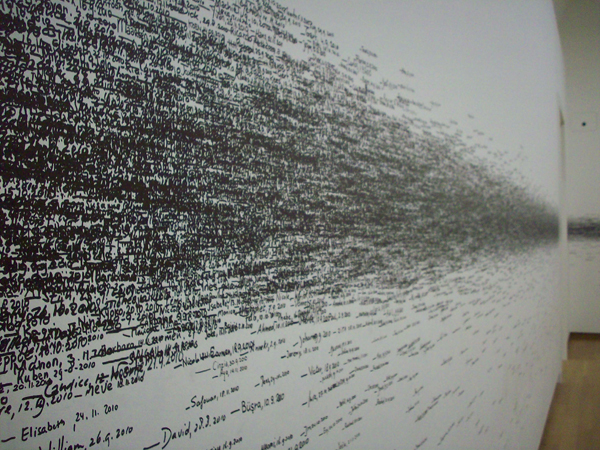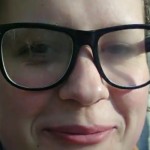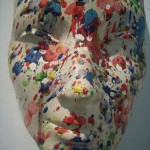As part of my preparation for Tricking the Everyday I managed to get part of…
Taking place at the Stedelijk – go go go!
Posted by Everdien on 12/10/10 • Categorized as All posts
Finally took the opportunity to visit the Stedelijk Museum Amsterdam, renovated and temporarily open to the public before building activities for the new wing close it again. My advice: go! and go now!. Show closes at 9-01-2011 and is well worth a visit.
My interest in art being of fairly recent date, I had no memories of the building before renovation so I was not burdened with any expectations. Nor did I pay heed to the discussion in Dutch media about the show’s being ‘too conceptual’, or the critique of rooms being left bare. I love conceptual art, and the emptier a museum is, the better. If it is intelligently done, my imagination will populate the rooms. I love it when that happens!
And it was done intelligently. I’m impressed with the way Ann Goldstein, the museum’s new director, programmed taking place. A lot of the work on show – both old and new – really made me look, and look again. I came away with the feeling of having been to a housewarming party, with my host being both proud of the renovated building and a bit shy about pointing out its many perfections. Being more or less left to my own devices, I wandered around at will, my attention drawn to floors and corners, arches and windows. I was both exhausted and exited when I left.
A couple of highlights:
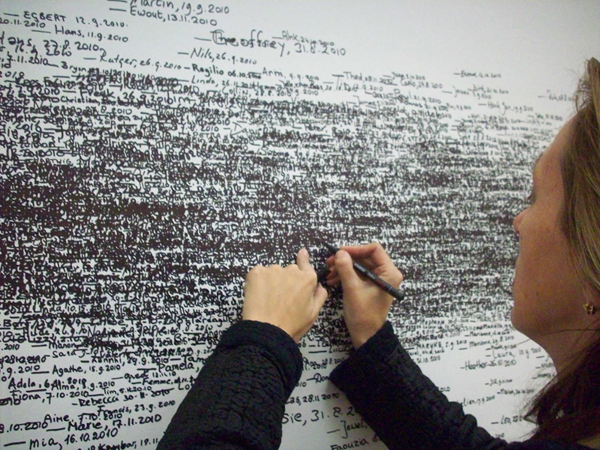
Measuring the Universe by Roman Ondák
A simple idea and a work with great appeal. Based on the tradition of marking a child’s height on doorframes as he or she grows, it begins with empty white walls. On the walls, gradually, a mural appears as attendants record the name, height and date of appearance of the museum’s visitors. Only the names of very tall or very tiny people remain visible, the rest – including mine – disappear into a band of black scrawls recording how forgettable the individual, and how important the swarm.

Pedestals for a Museum by Jan Dibbets (1969).
Dibbets (in 1969!) viewed the museum as an institution stuck in the past, and as a gesture of critique dug up the Stedelijk’s foundations at each of the building’s four corners. Done as if to place the building up on a pedestal, this was meant to be the ultimate “anti- artwork”. For an institution accused of being ‘stuck in the past’, the gesture of unearthing this particular work must have been a tongue-in-cheek operation.

The well polished floor sculpture by Ger van Elk (executed several times between 1969 and 1980).
Van Elk wanted “a realistic depiction of unrealistic situations.” Van Elk’s sculpture, a triangular section of the floor that has been highly polished, was very unconventional at the time. Having seen more interventions doing weirder things to floors (covering them with peanutbutter for instance, not to mention even yukkier stuff), this gesture has all the charm of an age of relative innocence.
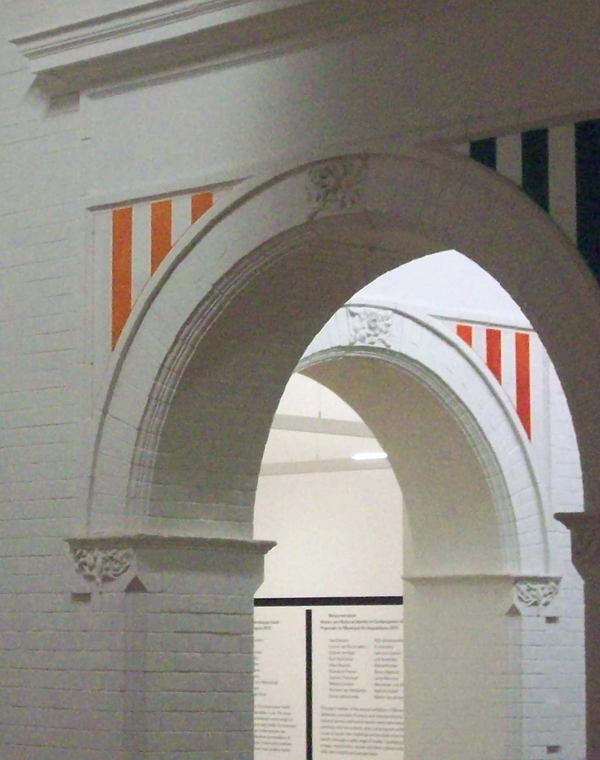
Kaleidoscope, Daniel Buren’s subtile work (realization 1983)
This work adds a splash of colour to all the whiteness of the interior, doing the arches in typical Buren stripes with colours that reference Henri Matisse. Again – it may be old hat, but it still has the power of underscoring the surface as an important part of architectural space.
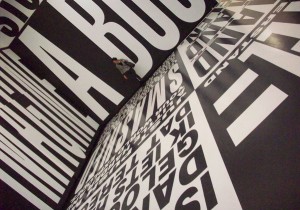
Past / Present / Future (2010)
Visually grand, a new work by Barbara Kruger. Didn’t get the why and wherefore of the texts, but she certainly grabbed the building’s largest gallery and made it her own.
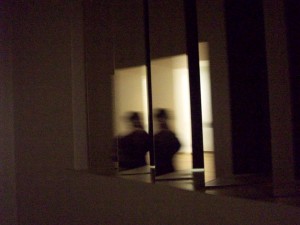
Daytime by Germaine Kruip (2004)
Last – and proverbially not least of the works I admired. In one of the high windows of a dark and (again!) empty room, every few seconds a number of mirrors turn 360 degrees. Each mirror has a matte black and a shiny reflective side. As they turn, the mirrors capture the daylight, reflect it into the room and bounce it back. I unintentionally made a self-portrait when I tried to capture the outside-inside duality the work tries to conquer. Adding another kind of inside-outside duality.
Gerelateerd:
-
External memory taking over
-
Stedelijk 2 - Disappointed - Amsterdam maart 2011
Went back to the Stedelijk today to visit Temporary Stedelijk 2. Expected a lot -…
| « Play at Stopera: this fohn is megatronic! | <-- previous post | next post --> | Games in unexpected places » |
|---|
